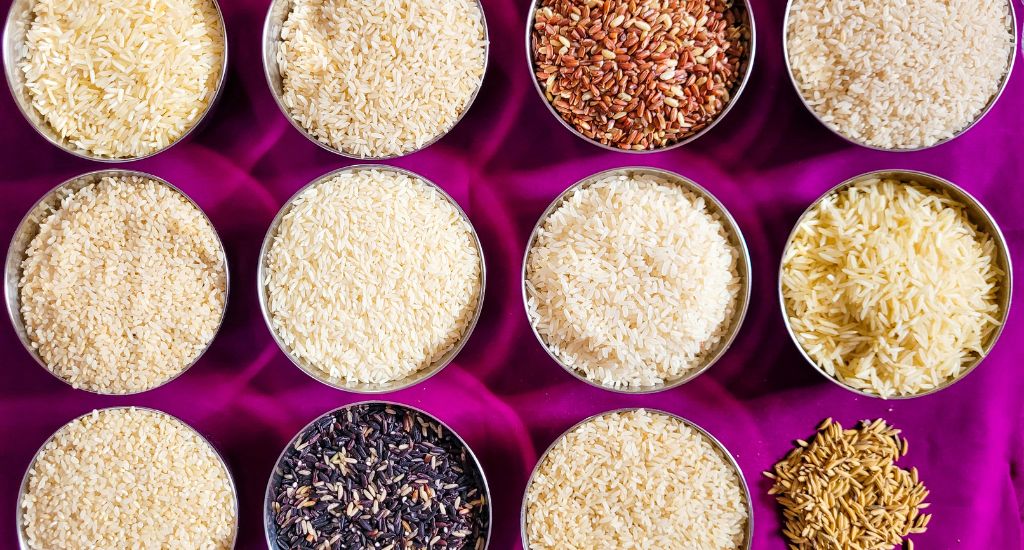
This Maharashtra village is home to 10 aromatic rice varieties
Murukate village in Maharashtra grows 10 traditional varieties of rice, with organic fertiliser and the mountain streams that irrigate the fields lending each of them a unique fragrance.

Murukate village in Maharashtra grows 10 traditional varieties of rice, with organic fertiliser and the mountain streams that irrigate the fields lending each of them a unique fragrance.
With the monsoon well on its way, the farm plots are buzzing with activity. Two months from now, once the crop begins to flower, the paddy fields of Murukate will be filled with a bouquet of floral and woody scents, thanks to the aromatic rice varieties the farmers have been growing for a long time here.
The sparsely-populated village on the foothills of the Sahyadris in Kolhapur district of Maharashtra is doing what conservationists aspire for – propagating heirloom rice varieties, preventing them from becoming extinct in the age of high-yielding hybrid rice.
Surrounded by a forest, the farmers of Murukate, a village situated near the 16th-century basalt and laterite Bhudargad fort, have been growing not one or two, as is the case in most paddy-growing villages in the southwestern part of Maharashtra but 16 varieties of rice, of which 10 happen to be fragrant ones.
Murukate, a 125-household village, stands on a soft stone hillock. Besides cultivating rice during the monsoon months, farmers grow pulses on the edges of the paddy fields. Once the crop is harvested, they grow sugarcane, foxtail millets and groundnuts.
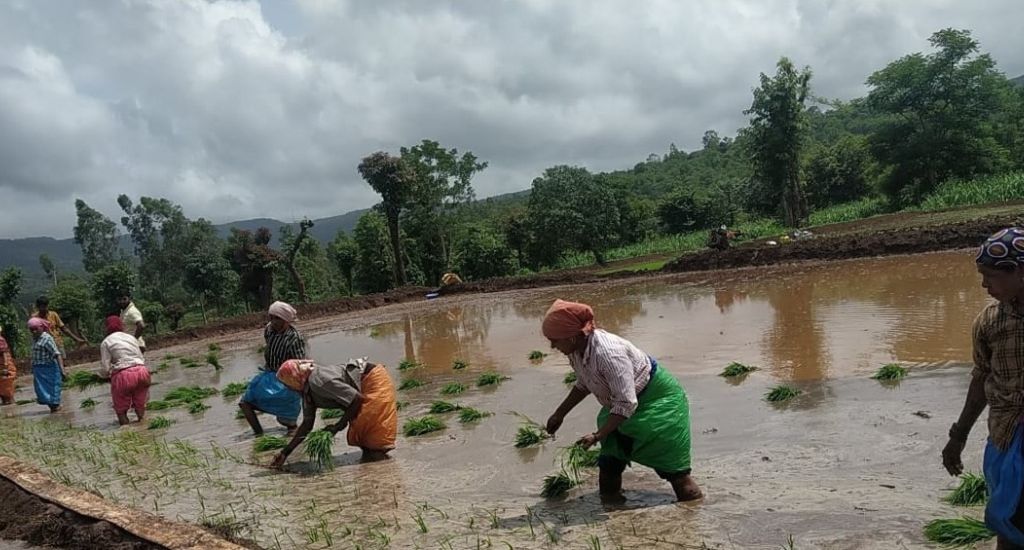
“We have a tradition of growing different varieties of rice. We have been doing this for generations,” says Pramod Patil, 39, who works as an art teacher in a local school and grows paddy on a two-acre farm along with his father.
Also Read | The Kolhapur rice tipping the scale one grain at a time
The village has about 400 acres of agricultural land, with each farmer owning between 0.40 and 4 acres. Most paddy varieties grown here fall under the category of suvashit (Marathi for aromatic) rice, which takes 120-135 days to mature, unlike the high-yielding and hybrid ones that are harvested much earlier.
The varieties range from the slender-grained ghansal, round jondhla jirga, black rice and ambemohar – the one with the fragrance of mango blossom – to the sticky indrayani and hawla, which is preferred for infants and also to make puffed rice.
The rice varieties are grown here on farms that are rain-fed and also irrigated by the streams flowing from the Sahyadris. As the fields are in a hilly terrain, the landholdings are comparatively smaller.
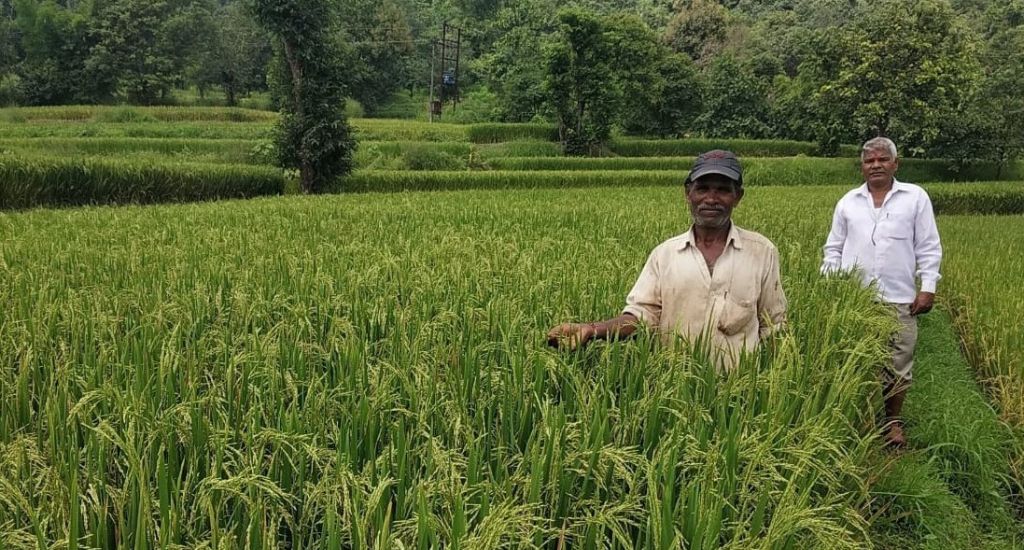
“Our fields are in the midst of a forest and are irrigated by the mountain streams, and so the produce tastes better, making it popular among rice lovers,” said Patil.
With fodder available in plenty due to the forest lying nearby, several families have also taken to dairy farming. The sizable number of cattle in the village has led to most households setting up individual biogas units.
The slurry from the biogas plants is used as organic fertiliser. In fact, Murukate residents have been using renewable energy to cook their meals for about 30 years now.
“Sometime in the early 1970s, we were introduced to the Japanese method of rice cultivation in which initial raising of the seedling is done in the nursery, which protects it from infections. The seedlings are then transplanted in the fields in rows to make weeding easy,” said Sanjay Khochare, a resident of the village who teaches Marathi at a college in Kolhapur. “But some people do continue to practise the traditional method,” added Khochare, a poet with two poetry collections to his credit.
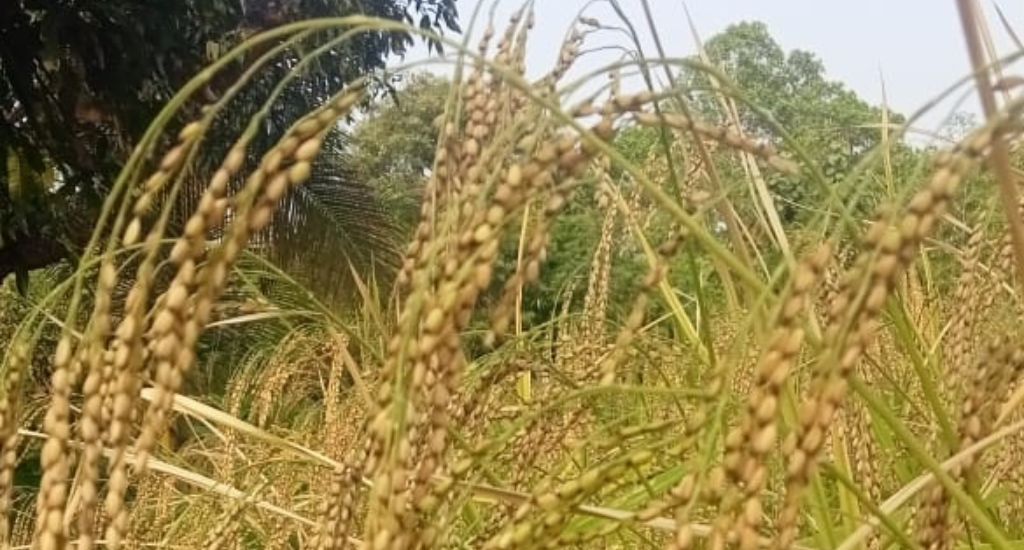
Farmers in Murukate also grow high-yielding rice varieties such as jaya, tamda budka, karjat, ratnagiri, shubhangi, YSR and tripti which also sell well.
Also Read | Strawberry sweetens deal for Maharashtra farmers
“Endemic varieties like jondhla jirga and kala jirga have been cultivated here for generations. These varieties have medicinal properties and are considered good for infants,” said Samadhan Ingle, the taluka’s krishi sahayak, who has been working with the farmers for the last five years.
Murukate also prides itself for being a model village. There are no liquor shops here. Every household has its own toilet. It has 15 women’s self help groups. Its gram panchayat elections go uncontested.
“Our village is dispute free. It’s the first village in the district to have received Nirmal Gram Puraskar. We have received the Sant Tukaram Vangram Award given for forest conservation, in addition to several other recognitions,” said Belekar, a former sarpanch who grows paddy like the others in Murukate.
The farmers get a harvest ranging between 25 and 30 quintals per acre. The aromatic varieties attract a better price, at times reaching Rs 6,000 a quintal while the slender and high-yielding ones fetch Rs 3,000 a quintal.
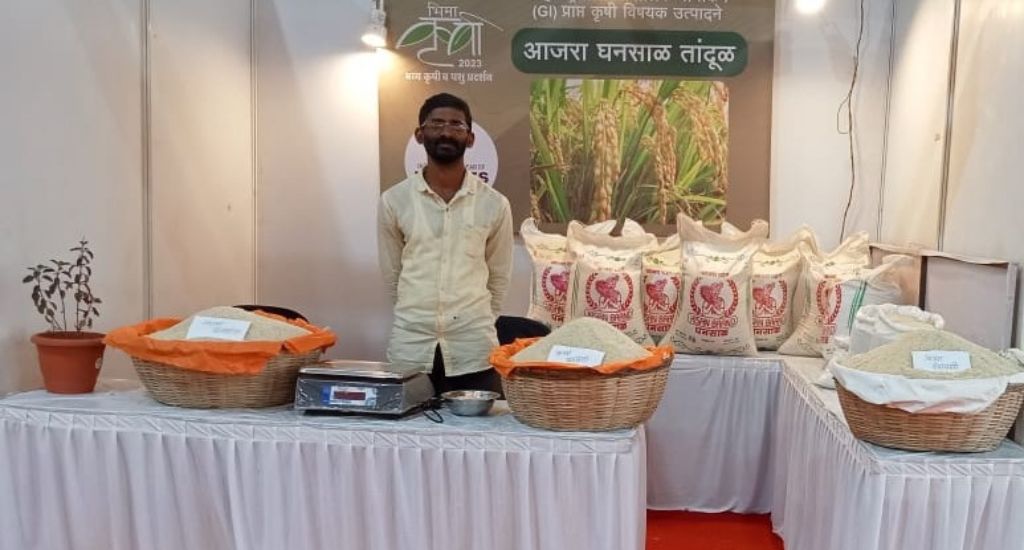
Depending on the landholding and the number of crops one grows, a farmer can earn between Rs 50,000 and a few lakh of rupees annually, growing wheat, lentils and vegetables following the harvest of paddy.
During the paddy-growing season, even the villagers who had migrated to cities like Kolhapur, Pune and Mumbai return to take up paddy cultivation. Harvesting begins around October.
“As the agriculture markets are far off, we sell our produce to traders visiting us or to farmer producer companies. We also set up stalls during festivals organised by temples and at other events in Kolhapur where our rice varieties do very well due to their distinct qualities,” said Patil.
Also Read | Sangli’s grape farmers are ‘raisin’ the bar
The sale to traders and rice millers commences in November. As soon as the threshing is done, trucks loaded with the produce are sent to the local market almost every day. For over a month, the village sees a continuous flow of traders camping here to acquire the rare aromatic rice varieties.
The lead image at the top shows some of the rice varieties grown in Murukate (Photo by Hiren Kumar Bose)
Hiren Kumar Bose is a journalist based in Thane, Maharashtra. He doubles as a weekend farmer.